Researching a passed-down family story about a ruined marriage, and finding the identity of an unknown person in a family plot, led to untangling hidden lives. The story is centered around my great aunt, Kathryn Kreft. It’s set mostly in San Francisco, St. Louis, the two Kansas Cities, and Dowagiac, Michigan.
Doing genealogy research is like being a detective. You look for clues in census and vital records. Old newspaper articles. Wills and lists of cemetery burials. Fading formal portraits and less-formal snapshots. Handwritten letters folded in envelopes with ancient-looking stamps. You dig in hidden places like dusty attics and you reach for high-up closet shelves that have shoeboxes overflowing with mostly unidentified photographs. Using these clues you develop theories and dig for more details in more records to verify those theories. You go over the records you already have to see if you overlooked something. It’s kind of like Sherlock Holmes without all the drama. But sometimes there is drama. Like this story.
When my maternal grandmother died in St. Louis in 1987, she was buried in a family plot in St. John’s Cemetery that had five graves. The first one had a man named Johann H. Krift. Next to him was Fred Hibbeler Jr., my grandmother’s brother, who drowned while swimming in the Mississippi River when he was 17. Then her parents Fred and Anna Hibbeler, sharing a headstone. And my grandmother Celeste was buried in the last spot.
At the funeral, my mother and her only sibling, my Uncle Ray, didn’t know who Johann Krift was. I was just beginning my genealogy journey then, and figuring out Johann Krift became my first genealogy challenge.
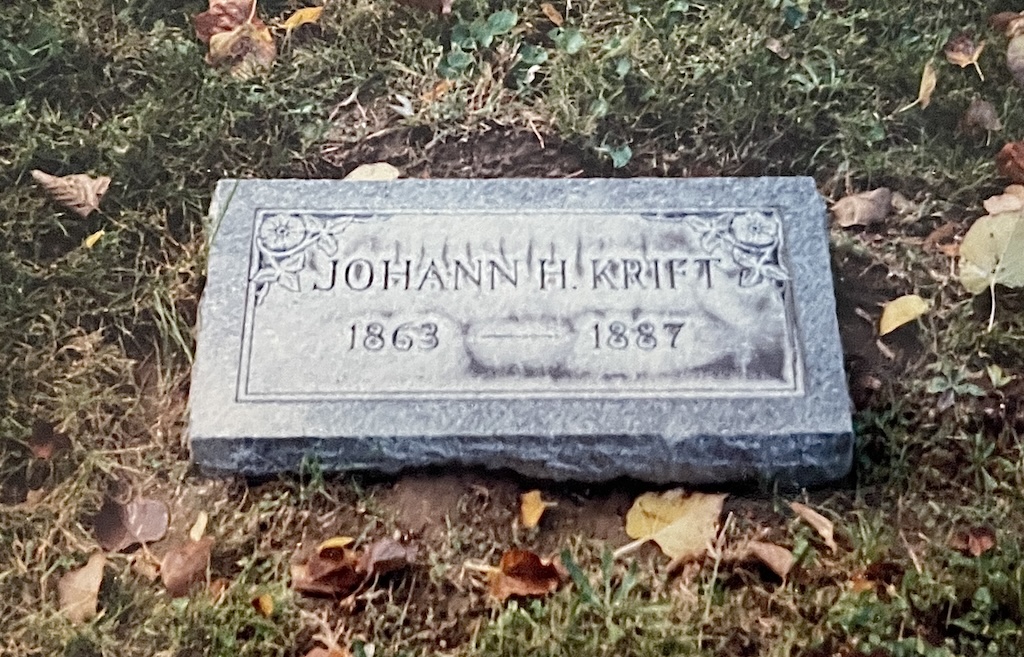
I two had clues. Johann Krift’s headstone has his years of birth and death on it (1863-1887). And my mother had a cemetery deed for the family plot that her mother had inherited. The deed was purchased by a woman named Mrs. Annie Krift, who paid $12 for the cemetery plot. It seemed likely that Annie Krift and Anna Hibbeler were the same person. And maybe she had a husband who died in 1887, two years before she married my great grandfather, Fred Hibbeler.
In 1989, I spent three months in San Francisco, living in a small furnished studio apartment in the Pacific Heights neighborhood. San Francisco has a great genealogy library called the Sutro Library. And I spent some time there researching.
The Sutro Library has old St. Louis marriage licenses on microfilm. And the microfilm rolls have handwritten indexes for both brides and grooms. I looked for Johann Krift in the groom’s index and didn’t find him. But I knew Annie Hibbeler’s maiden name, Kammann, and I found this listing for her in the index: Kammann, Annie M, date Nov. 20, 1886, License 21355, Vol. 32, Page 136.
That led to the marriage license for John H. Kreft and Miss Annie M. Kammann, both of St. Louis. The marriage took place at the Deutsche Evangelische Friedens Kirche (Friedens German Evangelical Church) in St. Louis on November 20, 1886. John/Johann’s surname was not Krift, but Kreft. The cemetery deed and his headstone both have a typo. But now I knew that the first person buried in the family plot in St. John’s Cemetery was the first husband of my great grandmother.
John and Annie were married in November, 1886. John died in October, 1887. During that short period of time, they had a daughter (born in April, 1887). And I was expecting to find her. I already knew that my grandmother Celeste’s oldest sibling, Kathryn, was a half sister. And now I knew who her parents were. I told my mother that Johann H. Krift was actually Johann H. Kreft and he’s your grandmother’s first husband. He’s also your Aunt Kathryn’s father.
About 1914 when she was 27, Kathryn moved from St. Louis to Kansas City, Kansas. In 1924, she married a man named Leon Keene there. She was 37 and he was 42. About five years later, they bought a house at 2028 Bristow Ave. where Kathryn would live for 50 years.
My mother knew Leon Keene as “Uncle Lee.” In 2023, I started looking at this part of my family tree and I wondered who this guy Leon Keene was. I had done some research on Kathryn, but I didn’t really know anything about Uncle Lee. So I started digging. And I ended up falling into multiple rabbit holes. Because Uncle Lee had three wives before he married my great aunt. And he shot one of them.
First wife: Lorena Rodenbaugh
Leon Thomas Keene was born in 1882 in Upland, Grant County, Indiana to Daniel and Mary (Rogers) Keene. The family later moved to Dowagiac, Michigan. In 1903 when he was 21, Leon enlisted in the army and was stationed at Ft. Wright in Washington state. When he was discharged in 1906, his character was described as “very good.” (He later joined the National Guard in 1916.)
After his time in the army, Leon moved to San Francisco, where he met his first wife, Lorena Rodenbaugh. They were married in March 1907 when he was 24, and she was 17. Lorena was the only child of John and Anna Rodenbaugh, who settled in Vallejo, north of San Francisco. John worked at the nearby Navy shipyard as a driller.
On February 4, 1909, Lorena gave birth to a son named Daniel, the name of Leon’s father. Just over a year later, in March 1910, Lorena filed for divorce from Leon for “willful neglect.” The 1910 census, taken in April, shows Lorena and Daniel living with her parents in Vallejo. Leon is not living with them, and I’ve never been able to find him in the 1910 census.
Lorena and her parents soon moved to San Francisco where she gave birth to a second son named Phillip on December 14, 1910. However, the name on the birth certificate is Clarence Bernard Keane. Records from later in his life show him as Phillip Clarence or Phillip C.
The birth certificate shows Leon’s residence as “? Missouri”. Lorena apparently didn’t know where in Missouri he was, but Leon is listed in a 1911 city directory for Kansas City. He appears to have left San Francisco between the time Lorena became pregnant and his son Clarence/Phillip was born. Did Leon take off when he found out his wife was pregnant? They were already separated at the time, and Lorena had filed for divorce.
Lorena later remarried, had one more child, Katherine, and lived for a while in Louisiana with her second husband. But in 1918, due to illness, she returned to California and stayed with her parents, who had moved back to Vallejo. She died on October 12, 1918 of pneumonia, which was the leading cause of death during the 1918-1919 Influenza Pandemic.
More tragedy came just a year later, when Daniel, Lorena’s first son with Leon Keene, died in a strange accident in Vallejo. He was playing with some friends on a ferry wharf, and he jumped onto an older part of the wharf. It gave way and he fell into the water below. Attempts to save him failed. He was buried in the same cemetery as his mother. He was ten years old.
The 1920 census shows Leon’s second son Phillip living with Lorena’s parents in Vallejo. He’s listed as C. Phillip. Phillip later married, but appears to have had no children. He spent 22 years in the Air Force, retiring in 1953. He died suddenly of a heart attack in 1960 at the age of 49. He had been living in Novato, California, which is across the bay from Vallejo, where he mostly grew up, and where his mother and older brother are buried. He’s buried in Golden Gate National Cemetery in San Bruno, California.
Did Leon Keene stay in touch with his two boys after he left for Kansas City? Did he know that his first wife died and that his son Daniel died a year later? Did he go to California for either funeral? There is no indication later in his life that Leon Keene had children. No newspaper articles mention children. There is no “survived by a son Phillip,” no “predeceased by a son Daniel” in Leon’s later death notices. Did he just abandon them?
Second wife: Effie Elmira (Swanson) Hess
Leon G. Keene married Elmira Hess on March 28, 1912 in KC, Kansas, although the couple lived in KC, Missouri. He was 29; she was 34. Elmira had three children, two boys and a girl, with her previous husband, Otto Hess. In September 1913, Elmira and Otto began a difficult child custody battle that was reported in the local newspapers, sometimes on the first page:
Declaring that neither a husband nor a wife who separated with ill feeling between them should be given the custody of their children, Judge Porterfield, of the juvenile court, this morning ordered the three children of Otto Hess and his former wife, Mrs. Elmira Keene, to the Gillis home and the Boys’ hotel. He also forbade any of the relatives of the boy, sent to the Boys’ hotel, to visit him without permission under penalty of being arrested. “You have deviled the life out of that poor boy,” said the court, pointing at Mrs. Keene. “If there was ever a boy who never had a chance, it’s this one. Why, I don’t blame your husband; no man could live with such a woman as you.” In 1911 Otto Hess separated from his wife, who later married Leon Keene, 314 West Sixteenth street. Hess appeared in court today to have reduced the $35 a month alimony he has been paying Mrs. Keene. According to Judge Porterfield, Mrs. Keene was the hardest woman to handle he ever had in his court. “I’ll have to take these children away from you and put them in a home,” announced the court. (The Kansas City Post, Missouri, Sep, 13, 1913, Page 1.)
Judge Porterfield said that young Hess [Otto, son of Elmira and Otto] was a good boy, but that the breach between his parents had worked untold damage to his future. “The mother,” he said, “has come into my office at times fighting mad and threatening to tear down the place. I don’t know what she is going to do to me.” (The Kansas City Star, Missouri, Sep, 13, 1913, Page 1.)
Maybe Leon Keene’s second wife was a little bit crazy. But Elmira was in a courtroom being told by a man that he was going to take her children away from her. Her anger seemed justified.
Following the custody battle, it appears the three children were either in foster care or living with one or the other parent at various times. When Otto Hess, the father of Elmira’s children, died in 1927, his obituary listed the children as “1 daughter, Mrs. Aileen Hamilton, Denver, Col.; two sons, Otto H. Hess of the home, Lincoln C. Hess, Honolulu.” (The Kansas City Star, Missouri, Feb. 15, 1927, Page 24.)
Elmira eventually followed her daughter to Denver where she used the name Effie Hess, going by her actual first name (Elmira was her middle name) and her first husband’s surname. She died in 1958 at the age of 81. She and her daughter are buried in Mt. Olivet Cemetery where my parents are also buried.
Fourteen months after they were married, Elmira filed for divorce from Leon, but later she realized she made a mistake and the divorce suit was dismissed. But it appears their divorce was eventually finalized sometime in 1914. Later that year, Leon got married again.
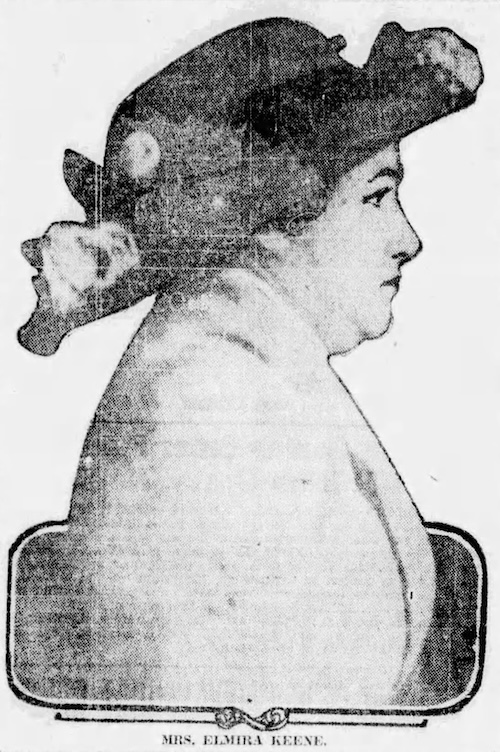
Third wife: Ethel (Hollox) Jenkins
The story now shifts from the Kansas City in Missouri to the one in Kansas. The woman who would become Leon Keene’s third wife, Ethel Hollox, married her first husband, Karl Jenkins in 1910. She divorced him in July 1914. Later that year, Ethel’s father John Hollox died. In December, she married Leon Keene. Leon and Ethel initially lived in KC, Missouri, but later moved to the Hollox family farm near KC, Kansas. They lived there with Ethel’s mother, Ella Hollox.
In October 1915, ten months after they were married, the story gets weird. On October 29, Ethel’s mother Ella went to the probate court office to discuss how to divide the family farm, which she had inherited from her husband Jonathan Hollox, who died the previous December. She wanted to divide it three ways, giving a third to herself and each of her two daughters. (Ella also had a son, Warren, who appears to have been left out of this.) She was told she would get half of the property and a quarter would go to each of her daughters. Ella told the probate division that Leon Keene had married her daughter, Ethel, for her money and she wanted to prevent him from getting any of it.
Later that day, according to Leon, he and his wife went to the market in a wagon, bringing a revolver with them for protection. When they returned, Ethel brought the gun into the house. Leon noticed the hammer wasn’t down, and when he lowered the hammer, the gun went off. A bullet struck Ethel in the abdomen while she was sweeping. She was taken to the hospital and Leon was held at the Wyandotte County jail pending an investigation. Leon claimed the shooting was accidental. But his mother-in-law, Ella Hollox, insisted he shot Ethel on purpose. It should be noted that Leon was in the army for three years beginning in 1903, so he certainly had some experience handling guns.
[Ethel’s mother], Mrs. Hollof (sic) told County Attorney Meek her daughter had often been mistreated by Keene and family differences were not uncommon. (The Kansas City Post, Oct. 31, 1915, Page 7.)
More than a week later, Leon was released from jail after his wife exonerated him.
“I can’t believe my husband meant to shoot me,” Mrs. Keene told James M. Meek, Wyandotte county attorney, when he called at the hospital yesterday. “I think it was an accident.” Meek instructed the sheriff’s office to release Keene. He will gain his freedom tomorrow unless something develops. (Kansas City Journal, Nov. 07, 1915, Page 8.)
On December 20, 1915, Ethel Keene filed a will leaving half of her estate to her mother and the other half to her husband. Her previous will, according to Leon, left everything to him. A week later, still weakened from the gunshot wound, Ethel died of tuberculosis.
Dr. J. A. Fulton, the attending physician, announced that the weakness caused by her wound kept Mrs. Keene’s system exposed to the ravages of consumption. (The Kansas City Globe, Dec. 27, 1915, Page 4.)

Leon Keene did three things after Ethel died. And I’m guessing about the first one. He didn’t go to the funeral because it was at his mother-in-law’s house. He contested Ethel’s will—he wanted all of her share of the Hollox family farm, not just half. He moved back in with his second wife Elmira across the border in Kansas City, Missouri.
But a wrinkle arrived by email one day in August 2024. A court clerk in Wyandotte County (where KC, Kansas is) sent me a document that stated: “...all real estate belonging to said Ethel Keene was sold for the purpose of paying debt and costs of administration. That said funds and all funds that came into the hands of your executor were applied on payment of such claims and expenses and no funds were left on hand for distribution. That said estate is now wholly insolvent and no action has been taken in said matter for more than two years.” ... “W.J. McCarty, Executor, Subscribed and sworn to before me this 11th day of June, 1920. (Probate Judge).” So after all that, after shooting his wife and her dying two months later, after his mother-in-law insisted he shot her on purpose, after he contested the will, Leon Keene got nothing.
Another little twist: I later found out that Ethel Keene’s mother Ella Hollox purchased the property from her daughter’s estate for $1021.65. This gave her ownership of 3/4 of the farm. The remaining quarter was owned by Ella’s other daughter, Ida. Ella Hollox died on March 12, 1919. She left her estate to her daughter, Ida, and her son, Warren.
Leon and Ethel were married for almost exactly a year. He lived with his ex-wife Elmira for about three years after that. And about five years later, he married my great aunt.
Fourth Wife: My Great Aunt Kathryn
In 1944, twenty years after marrying Kathryn, Leon Keene visited his cousin Etta (Keene) Means in Dowagiac, Michigan. He apparently visited there every year, occasionally accompanied by his wife. He passed away at Etta’s home on October 3 of arteriosclerotic heart disease. He was 62 years old.
Kathryn went to Dowagiac for the funeral. Leon was buried in Riverside Cemetery there. In November, Kathryn applied for a military grave marker for Leon, which was later installed in the cemetery. She also purchased a small flat stone for herself next to his, but that grave went unused. Her marker says “Kathryn L Keene 1887-19__”. When Kathryn died several years later, she was buried in Kansas City, Kansas.
I’m positive my mother knew nothing about Uncle Lee’s past. She certainly would have told me. We talked about her relatives quite often. She would have been just as astonished by Leon’s previous life as I am. But what did Kathryn know? There were several articles about the shooting of Ethel Keene in newspapers in both Kansas Cities. Kathryn was living in Kansas City, Kansas starting about 1914. Ethel died near there in 1915. Leon and Kathryn were married there in 1924. Maybe Kathryn read about the shooting in a newspaper and by the time she met Leon, she had forgotten about the incident or didn’t remember his name. Would you marry someone who shot his previous spouse? Even if it appeared it could have been accidental? Would you marry someone who contested the will of the spouse he shot, even though he was already entitled to half of her estate?
I have just one photograph of Uncle Lee. It was likely taken by my grandmother, who had a Kodak Brownie (or similar) camera and collected the photos she and others took in an album. In the picture he’s standing next to an unknown man. And he appears to be holding—perhaps hiding—a cane behind his back. He doesn’t look like a notorious gangster or an unsavory character. The picture was likely taken in the late 1920s on one of Kathryn’s trips to St. Louis to visit her family. My grandmother’s photo album also has several pictures of Kathryn.
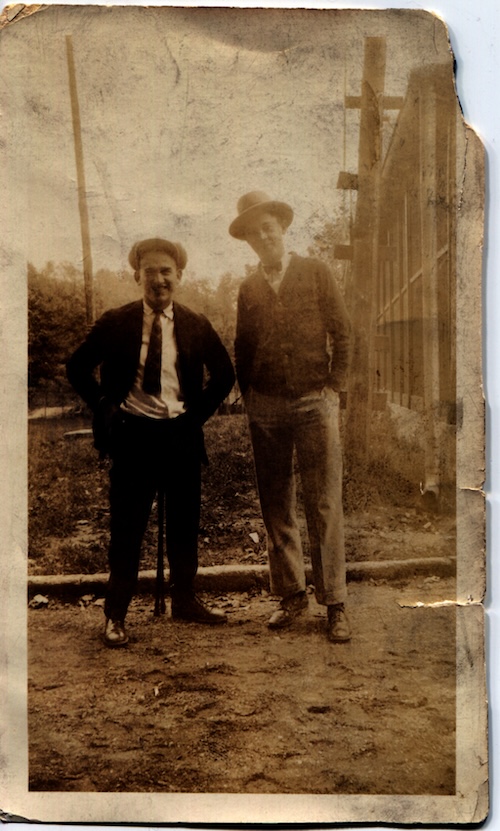
I don’t know what to make of Uncle Lee. He appears to have abandoned his young family in San Francisco. And he possibly never even met his second son. Was he involved in his children’s lives in any way? How did he react when his first wife died eight years after he left her? And then when he lost Daniel a year later? Was the shooting of his third wife Ethel really an accident?
Uncle Lee was married to Kathryn throughout the Great Depression and seemed to have had a steady job as a chauffeur, and later working in sales, during that time. From 1936 to 1938, Kathryn’s parents, Fred and Annie Hibbeler, lived with the Keenes at their house at 2028 Bristow. The Hibbelers moved back to St. Louis, where Fred died in 1939 and Annie in 1943. Around 1940 Kathryn and Leon briefly ran a restaurant together called the Quality Cafe. There’s no indication that their marriage was troubled.
A little over a year after Leon died, Kathryn married a widower named Fred Slover, who had children and grandchildren. They met at the Bethany Medical Center, a hospital where she worked in the kitchen and he was a janitor. It’s the same hospital where Leon’s third wife Ethel was taken after he shot her. Kathryn and Fred lived out their later years together until Fred died in 1961.
Kathryn was not the name she was given at birth. She became Kathryn around the time she moved to Kansas City. She was born in St. Louis on April 15, 1887. She was baptized Anna Louisa Wilhelmina Kreft, but became known as Minnie. The baptism took place in the same church where her parents were married, the Friedens German Evangelical Church. She had a twin sister Clara, who was stillborn.
Four months after she was born, Minnie’s father died, and her mother Annie moved in with her parents. Two years later, Annie married my great grandfather Fred Hibbeler. Annie and Fred had six children together, including the youngest, my grandmother Celeste. Fred became Minnie’s stepfather.

My mother told me there was a family story that Aunt Kathryn had gotten married when she was very young, had a child, and the father took off with the child. Before the internet, I tried unsuccessfully to prove this. I looked for anyone named Kathryn Hibbeler or Kreft in the same microfilm collection where I found the marriage license for Kathryn’s parents when I was in San Francisco. I was unable to find her. But that was before I knew about Kathryn’s name change, and I hadn’t yet found her baptismal record. My only clue then was the Hibbeler family listing in the 1900 census. She’s listed as Minnie Hibbeler, age 13.
As time went by, I continued to do research on Kathryn because proving the story my mother told me was a challenge. But I needed more clues. In 2023, when I decided to find out more about this Leon Keene guy, I also decided to look into the family story again. The 1930 census gave another clue about Kathryn. She and Leon (as Thomas, his middle name) are listed in Kansas City, Kansas at their house on Bristow Ave. And that census year asked for the person’s age at first marriage. For Leon/Thomas it says 23, which, although one year off, corresponds to his marriage to his first wife, Lorena Rodenbaugh. For Kathryn it says 18. Which corresponds to the year 1905. Nineteen years before she married Leon Keene.
A couple of years ago, the St. Louis City Recorder of Deeds put a marriage database online that includes an early archival section. I started typing in names. Kathryn, Wilhelmina, Minnie. Kreft, Hibbeler. Nothing came up until I decided to try some variations, remembering that Kathryn’s father Johann H. Kreft’s last name is written wrong in stone. And a good genealogy detective always looks for name variations. When I searched for Minnie Kraft, I got this result:
First Party Name: WILLIAM MORGAN
Second Party Name: MINNIE KRAFT
Information Document Name: 118695
Information Event Date: 04/27/1905
Could this be the Minnie Kreft I was looking for? I went to that same collection of St. Louis marriage licenses, now available online as digitized microfilm from FamilySearch, and downloaded a copy of the marriage license. It had plenty of information, including the name of the church where they were married. But nothing to indicate I had the right Minnie. So I looked for a marriage notice in the digitized St. Louis Post-Dispatch at Newspapers.com, and found this:
Marriage Licenses
William Morgan 1604 N. 17th st
Minnie Kraft 1604 N. 17th st
(St. Louis Post-Dispatch, Apr 27, 1905, Page 20.)
That address seemed somehow familiar. I looked at the 1900 and 1910 census sheets for the Hibbeler family, and for both it says they were living at this address: 1604 N. 17th St. I had the right Minnie. And now I had confirmed half of the story my mother told me. I also realized that my grandmother Celeste was two-and-a-half-years old in 1905 when her oldest sibling got married. She must have heard the story about Kathryn/Minnie’s early marriage from her older siblings and later passed it on to my mother.
When I looked for the church record for the marriage, I found this:
William Morgan, St. Louis, Mo; Minnie Kraft, St. Louis, Mo
[The columns for ages and witnesses are blank.]
(Bethany Evangelical Church, 27 April 1905, page 122, #31. St. Louis County Library microfilm.)
No witnesses? Often, the witnesses listed in the records of weddings held at churches are the best man and the maid of honor. I have the impression that no one attended the wedding. Did William and Minnie elope? Was she pregnant? I wasn’t able to find a birth record for a child of William and Minnie Morgan and I did a lot of digging. The pre-1910 St. Louis birth registers are a bit spotty. But I was convinced there was a child...
After I finished an early draft of this essay, I went back over it, looking for holes that needed to be filled with a record or a newspaper article. But the biggest hole came right at this point. Did Kathryn have a child with William Morgan and did he take that child away?
I had been trying to get a copy of the couple’s divorce record for a while from the St. Louis Circuit Court. Trying to contact them by email and phone didn’t work. In late September 2024, I decided to send them an old-fashioned analog letter in the U.S. mail.
Two weeks later, a thick brown manila envelope showed up in my mailbox. It shared space with an election blue book and an oversized piece of junk mail. Inside the envelope was a twenty page file with the divorce records for Minnie Katherine Morgan vs. William Morgan. This is the earliest record I have that associated Minnie’s name with the name she chose to use later in her life.
Here are excerpts from the divorce petition:
Comes now plaintiff (Minnie) and for her cause of action states that on the 27th day of April, 1905, in the City of St. Louis, Missouri, she was lawfully married to the defendant (William) and continued to live with defendant as his wife from and after the day and year aforesaid, until the 25th day of July, 1910; that during all that time plaintiff faithfully demeaned herself and discharged all the duties as the wife of defendant, and at all times treated him with kindness and affection; that said defendant wholly disregarding his duties as the husband of plaintiff and without cause did there and then on the day and year aforesaid, leave and absent himself from plaintiff and refuse to live with, support or provide for plaintiff and has ever since refused and still refuses to live with, support or provide for said plaintiff and has absented himself from plaintiff for a period of one year next before the filing of the petition herein.
Plaintiff further states that on August 31, 1907 there was born of the marriage aforesaid one male child, by name, William Carl Morgan, Jr. (I later found William’s birth record, which shows he was born on August 30, 1906.)
Plaintiff further states that at the time defendant deserted her, he took with him their said infant child and left him with his mother, Margaret Morgan, now residing at 3811A Maffitt Avenue this City, who refuses and has ever since the separation of plaintiff and defendant refused plaintiff the right to see her said child.
For further cause of action plaintiff states that defendant offered her such indignities as to render her condition intolerable in this, to-wit:- That defendant was possessed of a violent temper and without the least provocation would fly into a rage, strike and curse plaintiff; that on several occasions defendant borrowed money from the mother of plaintiff and refused to return the same, much to the humiliation and mental anguish of plaintiff.
(Excerpt from the Divorce Petition, Minnie Katherine Morgan, Plaintiff, vs. William Morgan, Defendant, St. Louis Circuit Court, Feb. 26, 1914)
Reading over these documents I was almost overwhelmed by how sad this was. William was abusive to his wife. He took a child away from the child’s mother. With help, it seems, from his own mother. Why?
On April 22, 1914, Minnie Katherine Morgan was granted a default. It appears William Morgan didn’t show up at the court when he was summoned in legal notices in the St. Louis Times newspaper to answer the plaintiff’s petition. On May 25, Minnie was granted a decree of divorce and given custody of her son William. But I believe she never saw the child again. Sadly, the biggest hole in my story was now filled. And the family story my mother told me was true.
William Morgan Jr. is my mother’s half first cousin. He’s my half first cousin, once removed. First cousins have two of the same grandparents. Half first cousins have just one. My mother and William Jr. have the same grandmother, Annie Kammann (later Kreft, then Hibbeler).
I attempted to find out what became of William Morgan, his mother Margaret, and his son, but I was not able to locate any records that showed where they might have gone. William disappears from St. Louis city directories after 1912; Margaret after 1914. Minnie Morgan’s divorce petition includes this: “Plaintiff further states that defendant is a non-resident of the State of Missouri and that the ordinary process of law cannot be had upon him in this state.”
The 1910 census, taken in April, shows William, Minnie and their three-year-old son living with William’s mother Margaret (listed as a widow), along with other members of the Morgan family in St. Louis. Three months later, William deserted his wife. And took her child from her.
Sometime after the divorce was final, Minnie moved to Kansas City, Kansas, where she lived on her own until marrying Leon Keene in 1924. Maybe she moved to Kansas City and changed her first name to Kathryn as a way of putting her past behind her and starting a new life. There was no Kathryn or Katherine in her name prior to the divorce. Her baptismal record shows her name as Anna Louisa Wilhelmina. After changing her first name to Kathryn, she used Louise as her middle name. Her new first name may have come from her maternal grandmother Katherine (Grunkemeier) Kammann.
Kathryn’s mother, Annie Kammann was the oldest child in her family, and for a while I thought she was the only girl. My early research, including reviewing census records, showed Annie with five younger brothers.
But much later, I looked deeper and discovered one more sibling who was born three years after the 1880 census was taken. Her name was Wilhelmina and she was called Minnie. She and her older brother, Herman Heinrich, who was called Henry, sadly died from diphtheria in 1885, eleven days apart. Minnie was just two. Harry was five. It appears Annie named her own daughter Wilhelmina (and also shortened it to Minnie) after her little sister, who Annie lost when she was fourteen.
I’ve always been intrigued by names and how they sometimes get passed down. Annie’s daughter Wilhelmina/Minnie Kreft had a twin sister Clara, who was stillborn. Annie later named a daughter she had with Fred Hibbeler, Clara. Maybe as a tribute to her lost child. Annie also named a son William after one of her brothers and her father. But sometimes names just seem to appear out of nowhere. My grandmother Celeste’s name has no antecedents. (She was named Celestia at birth.)
I also write fiction and I’ve used names of my ancestors and relatives for my characters. My family tree is a treasure trove of colorful names attached to fascinating people. In my fiction, I have written that you grow into the name you’re given. And if you don’t, or it no longer fits, maybe you change it. Like Kathryn did.
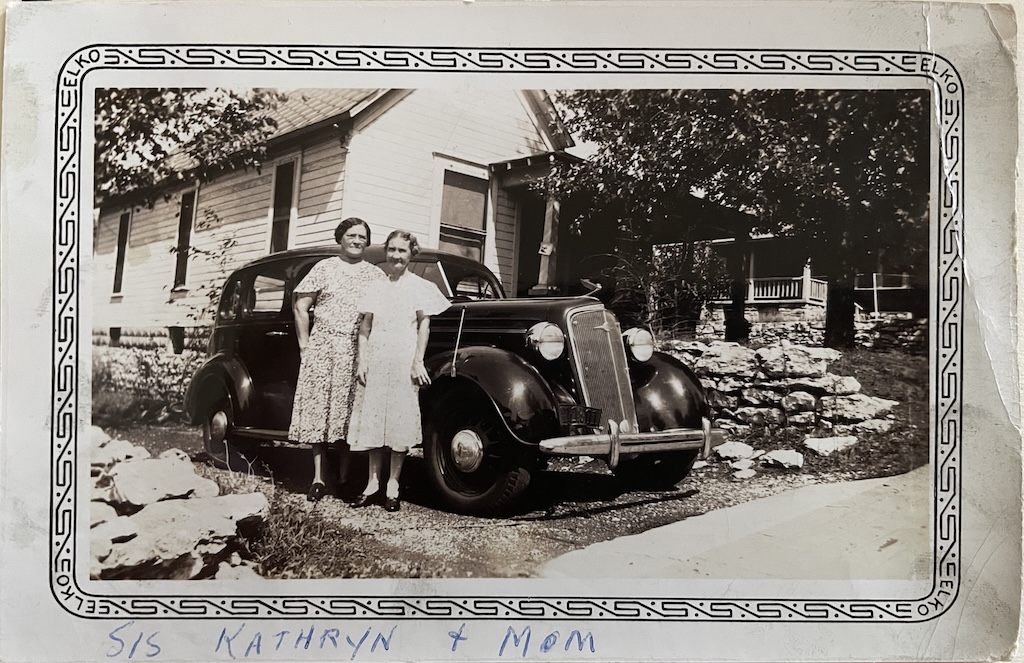
Kathryn Kreft Morgan Keene Slover, who was once called Minnie, died in 1980 at the age of 93. She’s buried in Maple Hill Cemetery in Kansas City, Kansas. There’s another grave marker with her name on it in Dowagiac, Michigan. She left some household items to her half sister Clara (Hibbeler) Damon, and two of Clara’s daughters. The lawyer who worked on the probate was paid $2000. About $2200 went to taxes, funeral expenses and miscellaneous fees. A thousand dollars was paid to the executor, Carol Scrivener, Kathryn’s “beloved friend,” who lived next door on Bristow. The rest, about $3300, went to the Bethany Medical Center where Kathryn and her third husband Fred Slover worked until they retired.
Kathryn left behind a lot of mysteries. I solved some of them. She also, sadly, left behind a lost child.
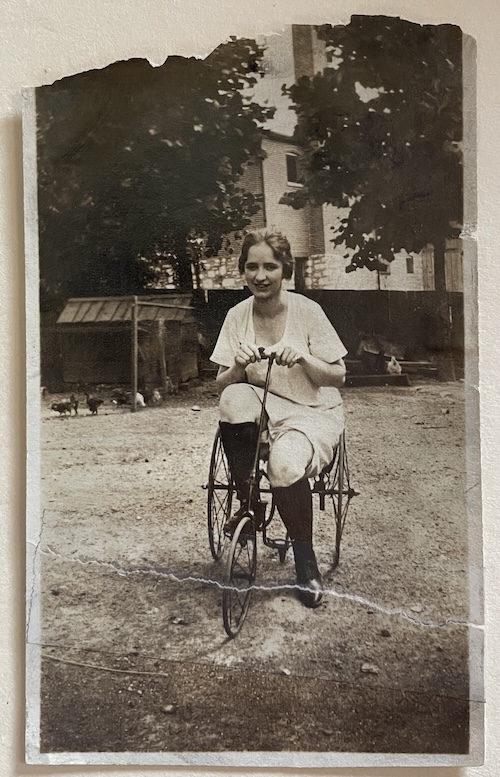
Coda: Searching for Kathryn’s Son, William Morgan
In early 2025, a few months after I finished researching and writing this article, I decided to do a deep search to determine what became of Kathryn’s only child, William Morgan. I didn’t have to dig too far. And it made me wonder why I didn’t find more earlier.
I started with the 1920 census, six years after Kathryn’s divorce from her lost son’s father. Ten years after he refused to let Kathryn see her son. Kathryn was living in Kansas City at the time, although I’ve never been able to find her in the 1920 census. Sometimes people get overlooked by census takers. But after a little digging, I was able to find her son.
In 1920, William Morgan was living in Houston, Texas with his father, William, and his father’s second wife, Luta. All of the important details matched up. William was born in 1906. His age in the 1920 census is 13. The census was taken in January before he reached his fourteenth birthday. His father is listed as being born in Wales, his mother in England, which I already knew. William’s father was working for a railroad company just like he did in St. Louis.
By the time of the 1930 census, William was 23 and not living at home. His father was no longer married to Luta, and was now living with his third wife, May L., and a six-month-old son, J. Edward, William’s half brother. The 1930 census asked for age at first marriage. For William’s father it says 19 which corresponds to 1905, the year he married Minnie (Kathryn).
In the early 1920s, William was a student at Houston Heights High School. He was class president his senior year. Then he attended Rice University where he studied architecture, later cofounding an architectural firm called Lloyd Morgan Jones. The firm would design several prominent buildings including the Houston Astrodome. According to Wikipedia: “The Astrodome was designed by architects Hermon Lloyd & W. B. Morgan, and Wilson, Morris, Crain and Anderson (Morris Architects).” W. B. Morgan is Kathryn’s son. A book about the firm called Constructing Houston’s Future: The Architecture of Arthur Evan Jones and Lloyd Morgan Jones was published in 2017.
I found pictures of Kathryn’s child from his high school yearbook and Rice University yearbooks. Pictures that Kathryn never saw. And all I had to do was dig a little, assemble some puzzle pieces, and tap my MacBook’s trackpad a couple of times. Kathryn’s long lost child was suddenly staring at me from my computer screen.
Sometime in the mid-1930s, William married a woman from his Houston Heights High School class, Winifred “Winnie” Biggs. I have a yearbook picture of her too. They had a child, William Byron Morgan Jr., a grandson Kathryn never met. William Jr. later had a child, a great granddaughter Kathryn never met.
William’s father, Kathryn’s ex-husband, died in 1954 at the age of 68. He’s buried in Hollywood Cemetery in Houston. His obituary lists these survivors: “Widow, Mrs. May Lucille Morgan; sons, William B. Morgan, J. E. Morgan, all of Houston; brother, James Morgan, Cleveland, Ohio; niece, Mrs. Margaret Seifer; grandson, William B. Morgan Jr, both of Houston.”
Thinking back over the St. Louis records I had compiled, made me wonder what became of William’s grandmother Margaret Morgan, his father’s mother. She disappeared from the St. Louis City directories around the time of the divorce of her son and Minnie/Kathryn. Margaret didn’t turn up in a search of the 1920 census. But then I found an obituary for her in the St. Louis Star and Times newspaper that said she had died in Houston on September 25, 1915. A Houston Chronicle obituary said her remains were shipped to St. Louis, accompanied by William Morgan and his sister, Mrs. C.B. (Alina) McCloskey. So Margaret Morgan briefly joined two of her children in Houston. She’s buried in Valhalla Cemetery in St. Louis.
Kathryn’s son William Morgan died at the age of 56 in Houston in 1962. But Kathryn wasn’t able to make it to the funeral. Because she didn’t know about it. William is buried in Forest Park Lawndale Cemetery in Houston. His wife Winnie was later buried there. On William’s death certificate, where it asks for the names of his parents, the box for his mother says “not recorded.” Minnie Morgan (Kathryn) was erased from her son’s life. On an official Texas document.
Kathryn’s son died 18 years before she did. It’s like she lost him again. Because, sadly, Kathryn didn’t know any of the things that I found — William was president of his high school class, he graduated from a highly-regarded university, he wore glasses, he was one of the architects who designed the Houston Astrodome... And he had a son and a granddaughter...
Kathryn only knew William as a small child, a child whose remarkable life was taken from her. A child, who, after being separated from his mother, likely more than once cried out for her. Until maybe, sadly, he forgot her. But I don’t think she forgot him.
He looks like you, Kathryn.
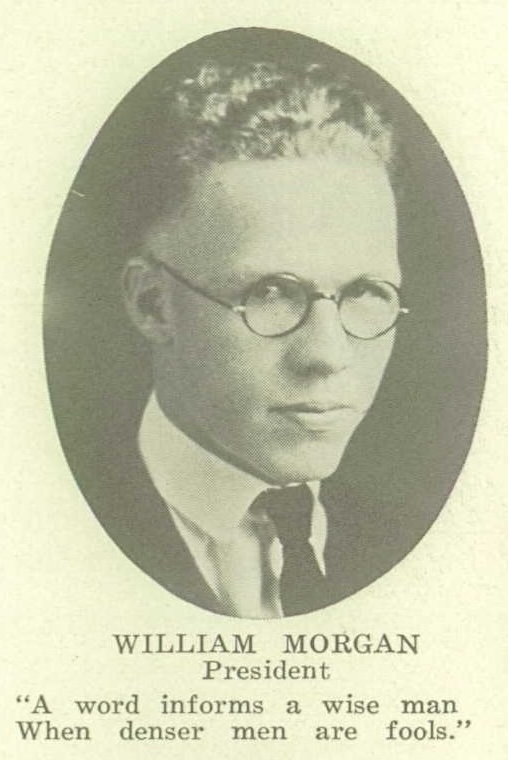
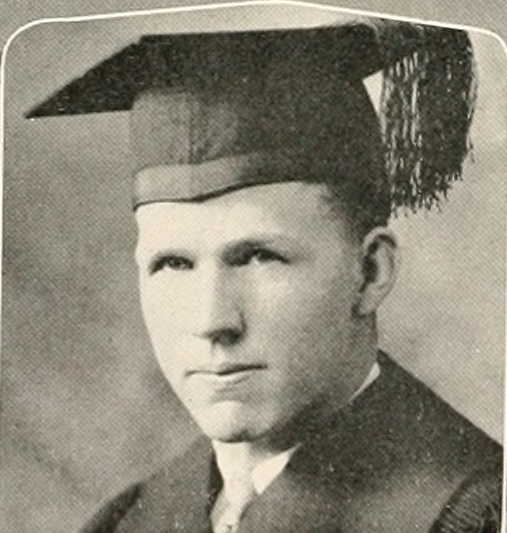
Gratitude to...
California: the Sutro Library in San Francisco, the San Francisco County Clerk, the San Francisco Superior Court Civil Records Department, the Solano County Library.
Kansas: the Wyandotte County District Court Clerk, the Wyandotte County Historical Museum.
Michigan: the Van Buren District Library, the Cass District Library.
Missouri: the Jackson County Circuit Court Clerk, the Kansas City Public Library, Missouri Digital Heritage, the Missouri State Archives, the St. Louis Recorder of Deeds Archives Department, the St. Louis Genealogical Society, the St. Louis County Library, the St. Louis Circuit Court Clerk.
Texas: the Houston Public Library Digital Archives.
And the FamilySearch Library in Salt Lake City, FamilySearch.org, Ancestry.com, Newspapers.com.
Special thanks to Lynne Cuthrell for her help and suggestions while I was putting this together.
For my grandmother Celeste (Kathryn’s baby sister). And for my mother.
© 2025 Joe Beine. Except where noted, photographs are from my family collection. May not be reproduced without permission.
Additional Material
Includes excerpts from four versions of the shooting from four Kansas City newspapers, Kathryn’s name changes, and William’s 1906 St. Louis birth record.
More Family Stories
Information about Joe’s book, Made Out of Trees